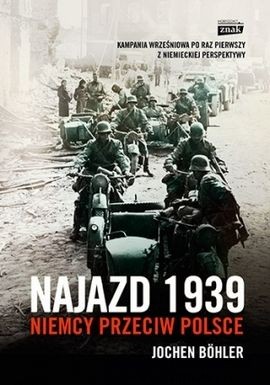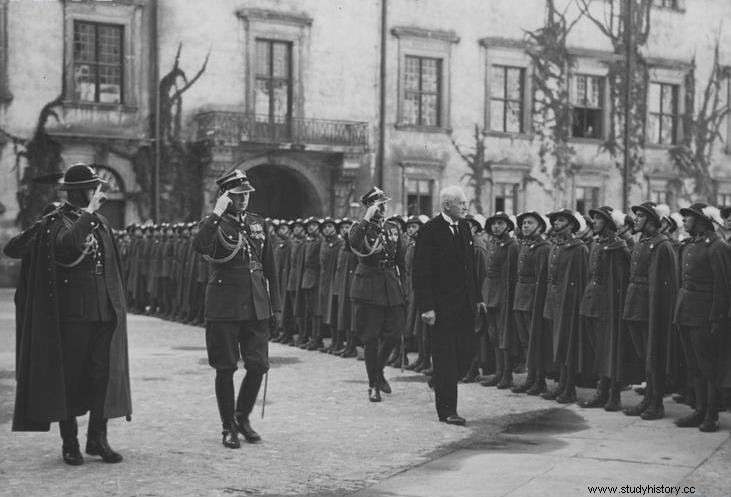They were shot, blown up, burned alive in barns. Who are we talking about? About Polish soldiers taken prisoner in September 1939. They were protected by the Hague Conventions, but the Germans did not mind it, committing the worst crimes.
In our pages, we have already described the greatest crimes against the civilian population that the Germans committed during the September campaign. Now it's time to take a closer look at the hideous deeds that fell victim to thousands of soldiers of the Polish Army. It is difficult to comprehend the enormous scale of cruelty that the Wehrmacht displayed against Polish soldiers in September 1939. According to Jochen Böhler, the author of the book "Raid 1939. Germany against Poland", it resulted from the fact that our grandparents:
not seen at all as equal opponents. It seemed to German troops that the Slavs and Jews should be treated with the greatest caution, which resulted from the allegedly lowest character traits of these ethnic groups, and above all from the tendency to deceit attributed to them.
Podhale people burned alive
We didn't have to wait long for the effects of such thinking. The German historian gives a long list of crimes committed by the invaders. For example, on September 10, 1939, in the courtyard of the church in Piaseczno, half of the 30 captured Polish soldiers were shot to the head.
Ten days later in Majdan Wielki, in retaliation for the death of one Wehrmacht soldier, the Germans shot more than 40 of our soldiers. On September 18, in Śladowo in Mazovia, the invaders shot 150 soldiers of the "Poznań" and "Pomorze" armies, who had been taken prisoner during the Battle of the Bzura. Also 150 civilians were murdered then.

In September 1939, the Germans murdered thousands of captured soldiers of the Polish Army (source:public domain).
There are also reports of the burning alive in barns and other buildings of whole groups of prisoners. Such an event took place, among others, in Urycz near Drohobycz, where an unidentified Wehrmacht unit at the end of September 1939 murdered about 100 soldiers in this way 4th Podhale Rifle Regiment.
An example of a similar and no less monstrous crime was given by Jerzy Ślaski. He described the bloody retaliation that the German armored personnel from the "Kempf" division took on the defenders of the Modlin fortress. In the work "Fighting Poland" we read:
Immediately after the Poles laid down their weapons [Germany] began to brutally murder them. They were killed in bunkers, fields and trenches, and the wounded were killed . A group of prisoners captured in the area of the Jewish cemetery in Zakroczym was poured over with gasoline and burned. This massacre lasted several hours. About 600 Polish soldiers died there.

Stop because I'm shooting. Crimes in Topolno, Serock and Zambrów
The previously mentioned Jochen Böhler in the book "Zbrodnie Wehrmacht w Polsce" aptly notices that even temporary placement in assembly points and camps did not protect Polish prisoners from violence. All because of the sentries who were extremely eager to open fire, even for the most trivial reasons.
This is what happened on September 3 in Topolno on the Vistula River, where the Germans fired machine guns and armored vehicles at the supposedly escaping Poles. The losses among the prisoners were significant, about 80 of them died. In the nearby Serock, the soldiers of the 604th Light Battalion for Road Construction shot a further 84 Polish soldiers on the night of September 4-5.

Even in a POW camp, Polish soldiers could not feel safe (source:public domain).
Another massacre took place on September 11 in Zambrów. About 4,000 captured soldiers of the 18th Infantry Division were gathered in the square of the local barracks, who were told that they would be shot if they got up from their places . During the night, for unknown reasons, a herd of wagons ran into the square with the sleeping soldiers.
As a result of the panic that ensued, the Germans opened fire with machine guns and small arms to Poles trying to avoid being trampled. The massacre lasted for ten minutes and only ended when the Wehrmacht soldiers were also injured. Those of the Poles who survived were forbidden to move again. The wounded and the dying received no help.
The scale of the murder was discovered only on the morning of the next day, when it turned out that about 100 Polish prisoners of war were injured, and another as many were killed . The official German announcement said about 100 people were killed in an escape attempt.
Szczucin. Retaliation of the "honorary" Wehrmacht
The next crime was carried out by the Germans on the following day, that is on September 12, at the assembly point for wounded prisoners in a school in the village of Szczucin near Dąbrowa Tarnowska. The pretext was the shooting by Lieutenant Bronisław Romaniec of the 5th Podhale Rifle Regiment, interrogating him, Sergeant Galla. Once again, the punishment for the death of one German was the extermination of dozens of Poles.

President Ignacy Mościcki passes the front of the 5th Podhale Rifle Regiment. It was in this unit that Lieutenant Bronisław Romaniec served (source:public domain).
In retaliation, Wehrmacht soldiers stationed in Szczucin threw grenades inside the building and opened fire on the Poles there . Those who tried to get out of the burning school were shot at. Approximately 40 Polish soldiers and about 30 civilian refugees died as a result of the massacre. However, this is not the end, because the Germans also shot 25 Jews brought to bury the bodies of the murdered.
It is noteworthy that the volunteers participating in the suppression of the "rebellion" were reportedly awarded the Iron Cross. At least that was what one of the German participants of those events claimed after the war. As Jochen Böhler emphasizes, the crimes:
to which Polish soldiers fell victim to prison are very different from each other […]. Nevertheless, it can be seen that a similar mechanism was used in their attitudes. German officers and soldiers […] they had little hesitation in using violence.

According to Jochen Böhler, such a large scale of crimes against Polish prisoners of war was caused by the fact that "German officers and soldiers [...] had little resistance against the use of violence" (source:public domain).
Scary scale of the phenomenon
The cases mentioned above can by no means be considered single, isolated excesses. The testimonies of witnesses collected by the Main Commission for the Investigation of Nazi Crimes in Poland prove that it was a common phenomenon which in September 1939 occurred in all areas of the Wehrmacht occupation.
Unfortunately, we will probably never know the exact number of Polish soldiers who were murdered by the Germans. Without a shadow of a doubt, there were thousands of them . The overwhelming majority of the perpetrators of these crimes escaped responsibility, never being brought to trial. They returned to their Nazi homeland as heroes. And they considered themselves to be such as well.
Sources:
- Jochen Böhler, The invasion of 1939. Germany against Poland , Horizon 2015 sign.
- Jochen Böhler, Wehrmacht crimes in Poland. September 1939. Total war , Społeczny Instytut Wydawniczy Znak 2009.
- Ryszard Rybka, Kamil Stepan, Officer's Yearbook 1939 , Academic Bookshop 2006.
- Jerzy Ślaski, Fighting Poland , PAX Publishing Institute 1990.
